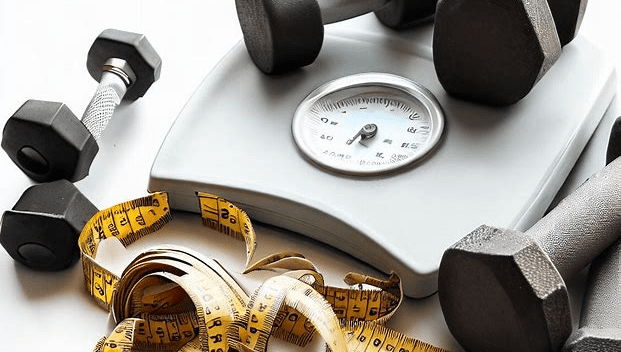Table of contents

The Basal Metabolic Rate (BMR), also known as the Resting Metabolic Rate (RMR), is the amount of energy that a human body consumes daily to maintain its functions while at rest and without any physical activity, at a temperature of 20°C. This amount of energy can be expressed in kilocalories or joules. The BMR calculator is a fast and free tool that can help you calculate your basal metabolic rate.
BMR Calculator
This calculator can help you calculate your Basal Metabolic Rate (BMR) or Resting Metabolic Rate (RMR). It is the amount of energy that your body requires to maintain its functions while at rest and without any physical activity. Please fill in all the fields with whole numbers and without commas. The BMR can only be calculated for individuals aged 8 years or older. This BMR Calculator is only for individuals aged 19 or older.
BMR Formula

To calculate your Basal Metabolic Rate (BMR) or Resting Metabolic Rate (RMR), you need to provide your weight in kilograms, height in centimeters, age, and gender. If your Body Mass Index (BMI) is greater than 30 (obese), a correction should be made as an increase in body fat reduces the basal metabolic rate. This correction has already been taken into account in our Basal Metabolic Rate calculator.
BMR Formula for Women
- For women with a BMI less than 30:
- kcal per 24h = [655 + 9.6 x weight (kg) + 1.8 x height (cm) – 4.7 x age]
- For women with a BMI of 30 or more:
- kcal per 24h = [2.4 x weight (kg) + 9 x height (cm) – 4.7 x age – 65]
BMR Formula for Men
- For men with a BMI less than 30:
- kcal per 24h = [66.5 + 13.7 x weight (kg) + 5 x height (cm) – 6.8 x age]
- For men with a BMI of 30 or more:
- kcal per 24h = [3.4 x weight (kg) + 15.3 x height (cm) – 6.8 x age – 961]
Accelerating your basal metabolic rate
How to Increase Basal Metabolic Rate, we explain here: Increasing Basal Metabolic Rate
Unlocking the Basal Metabolic Rate (BMR): A Deep Dive
Defining the Metabolism Rate

The Basal Metabolic Rate (BMR), often referred to as the metabolism rate, serves as a critical metric. It quantifies the daily energy consumption required by the human body for fundamental functions. This calculation is performed under specific conditions—fasted state, no physical efforts, and a surrounding temperature of 20°C—highlighting the core energy needs.
Continuous Caloric Expenditure: A Constant Process
Contrary to common belief, the body is a calorie-burning powerhouse even during moments of rest. The BMR reflects the calories expended by the body to sustain its basic functions, showcasing the continuous nature of energy consumption.
The Mechanics of Rest: Caloric Burning at Complete Rest
The BMR unfolds its significance in a state of complete rest, illustrating the calories burnt by the body to maintain essential functions without any external influence. This insight into the body’s intrinsic calorie-burning mechanism provides a foundational understanding of metabolic dynamics.
Meeting Energy Demands: The Vital Role of Basal Metabolic Rate (BMR)
- Essential Functions and Caloric Needs: The human body relies on a specific calorie count to sustain crucial functions such as breathing, metabolism, and circulation. When insufficient calories are consumed, the body’s ability to function optimally is compromised. Recognizing this fundamental requirement is key to maintaining overall health.
- Crucial Role of Basal Metabolic Rate (BMR): Enter the Basal Metabolic Rate (BMR), a linchpin in ensuring a person’s energy needs are met. This metric outlines the minimum amount of calories the body requires at rest, powering essential functions. Understanding and optimizing BMR become essential for maintaining a healthy energy balance.
- The Influence of Physical Activity on Energy Consumption: Beyond the BMR, a significant portion of energy consumption is attributed to physical activity. In adults, light physical exercises contribute substantially, accounting for 60 to 70 percent of the total energy requirement. Acknowledging the interplay between BMR and physical activity is crucial in tailoring dietary habits to individual lifestyles.
- Increasing Basal Metabolic Rate: The good news is that increasing the Basal Metabolic Rate is within reach and can be achieved easily. Simple and straightforward strategies can be employed to elevate BMR, contributing to a more efficient energy utilization process. This awareness empowers individuals to take proactive steps in optimizing their metabolic health.
Understanding Caloric Requirements: Unveiling the Dynamics
Weight, Height, and the Metabolic Symphony
Caloric needs come in two distinct categories: one tied to weight and height and the other influenced by age, gender, and body composition. An individual’s metabolism undergoes modulation as weight and height increase, a strategic mechanism for regulating body temperature and maintaining equilibrium.
Gender Disparities in BMR
Gender emerges as a pivotal factor in the intricate dance of caloric requirements. Men, endowed with greater muscle mass, boast a higher Basal Metabolic Rate (BMR) compared to women. This divergence underscores the significant role of body composition in shaping metabolic dynamics.
Age-Infused Variations in BMR
Age introduces a nuanced layer to BMR differentials. Young individuals enjoy a higher BMR, a consequence of greater muscle mass. However, as age progresses, a decline in muscle mass becomes apparent, leading to a slowdown in metabolism. The manifestation of this phenomenon begins around the age of 30, marking a three percent BMR decrease per decade.
Navigating the Lifecycle of BMR
Understanding the intricacies of caloric requirements at different life stages empowers individuals to tailor their dietary approaches accordingly. The dynamic interplay of weight, height, gender, and age unveils the multifaceted nature of metabolism, paving the way for informed lifestyle choices and holistic health management.
Decoding the Influence of Body Composition on BMR
The Muscle-Fueled Engine: Unraveling the Impact on BMR
Never underestimate the significance of body composition in the intricate tapestry of Basal Metabolic Rate (BMR). As a general rule, a higher muscle mass translates to an elevated BMR. The rationale behind this is elegantly simple: muscle tissue boasts a metabolism that far outpaces its fat counterpart. This underscores the pivotal role of muscle in dictating metabolic intensity.
Organic Orchestra: Understanding BMR Contributions
Delving deeper, it becomes evident that different organs contribute distinctively to the symphony of BMR. The liver, a metabolic powerhouse, takes center stage, commanding a substantial 26 percent of the BMR ensemble. In contrast, the kidneys play a more subdued role, contributing a modest 7 percent. Nestled in between, the brain, with its intricate functions, claims its share, constituting approximately 18 percent of the BMR composition.
Holistic Perspective on BMR
The journey through BMR intricacies reinforces the understanding that body composition is not a mere aesthetic consideration but a dynamic factor shaping metabolic vigor. As the body’s engine, muscle mass propels the metabolism forward, while internal organs orchestrate a harmonious interplay of energy expenditure. Acknowledging these nuances provides a comprehensive lens for individuals navigating the path of health and well-being.
Cracking the Code: BMR’s Link to Obesity
Beyond the Scale: Deciphering the Basal Metabolic Rate (BMR) Connection
In the intricate dance between metabolism and obesity, the spotlight turns not only to overall weight but, more crucially, to the proportion of biologically active tissue. The revelation emerges: it’s not the sheer weight that holds sway over metabolism but the presence of metabolically active tissue that orchestrates the metabolic symphony.
The Role of Active Tissue
Enter the intriguing correlation—the individuals blessed with a higher proportion of metabolically active tissue revel in a higher BMR. This metabolic prowess is the secret ingredient fueling their body’s energy expenditure at rest. Conversely, the realm of obesity reveals a slightly dimmed BMR. Those grappling with excess weight often find their metabolic rate taking a nuanced dip compared to their normal-weight counterparts.
Weight and Metabolism: A Delicate Balance
The nuanced relationship between basal metabolic rate and obesity underscores the intricate nature of metabolic health. It’s not merely about the numbers on the scale but rather the composition of the body’s internal landscape. Recognizing this interplay becomes pivotal in the pursuit of a comprehensive understanding of metabolism, shedding light on the pathways towards a healthier and balanced existence.
Formulas for determining basal metabolic rate
You can determine basal metabolism using the following simple formulas:
- For men: 1 calorie per 1 kg of body weight per hour.
- For women: 0.9 calories per 1 kg of body weight per hour.
Calculating basal metabolism based on body surface area is considered more accurate:
- For men: 915 calories of basal metabolism per square meter of body surface.
- For women: 834 calories of basal metabolism per square meter of body surface.
Special Circumstances and Basal Metabolism
Diets, Climates, and Pregnancy
Embarking on the exploration of basal metabolism unveils a realm where special circumstances cast their unique shadows. Diets, geographical locations, the miraculous journey of pregnancy, and the embrace of warmth—each paints a stroke on the canvas of metabolic intricacies.
Radical Diets and the “Starvation Mode” Phenomenon
Venturing into the world of intense fasting through radical diets, with caloric intake dwindling below 1200 calories per day, unravels a fascinating phenomenon— the activation of the body’s defense mechanism, aptly named “starvation mode.” This adaptive response is a testament to the body’s resilience, strategically curbing calorie consumption in the face of prolonged hunger.
Living in Warmth
Further, living in tropical climates adds a unique note to the metabolic symphony. The body, adapting to the warmth, orchestrates metabolic adjustments, creating a dance between the environment and internal energy processes.
Pregnancy’s Metabolic Ballet
Pregnancy, a miraculous journey, introduces its own choreography to the metabolic ballet. The body, nurturing new life, navigates shifts in metabolism, ensuring both the mother and the developing life within receive the energy they need.
In the intricate dance of basal metabolism, these special circumstances emerge as distinctive partners, reminding us that the metabolic narrative unfolds uniquely for each individual, influenced by the diverse rhythms of life.